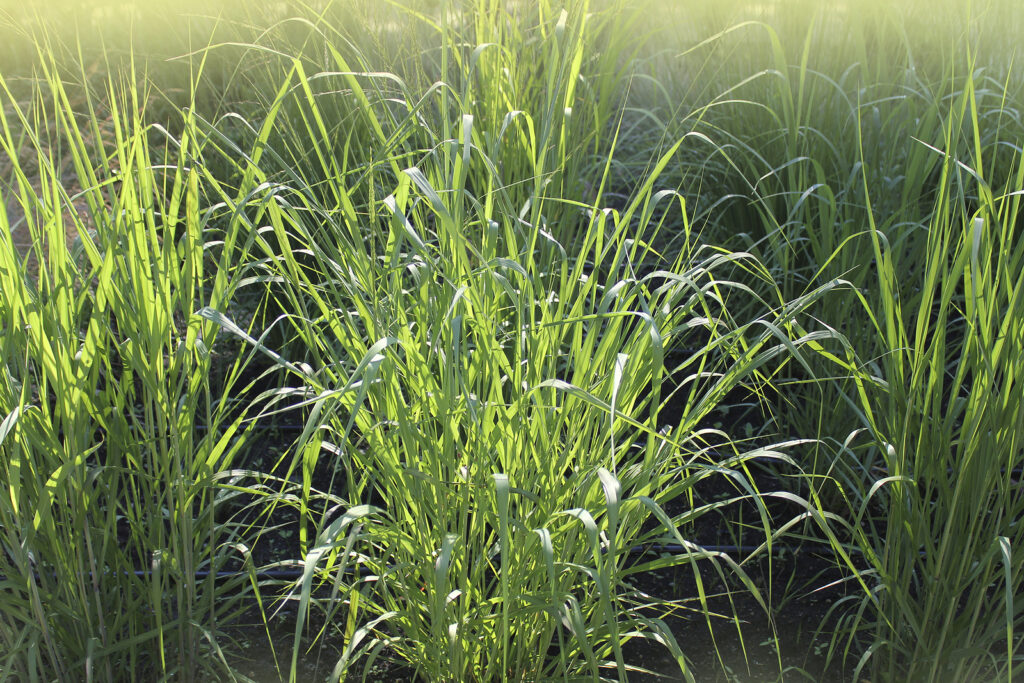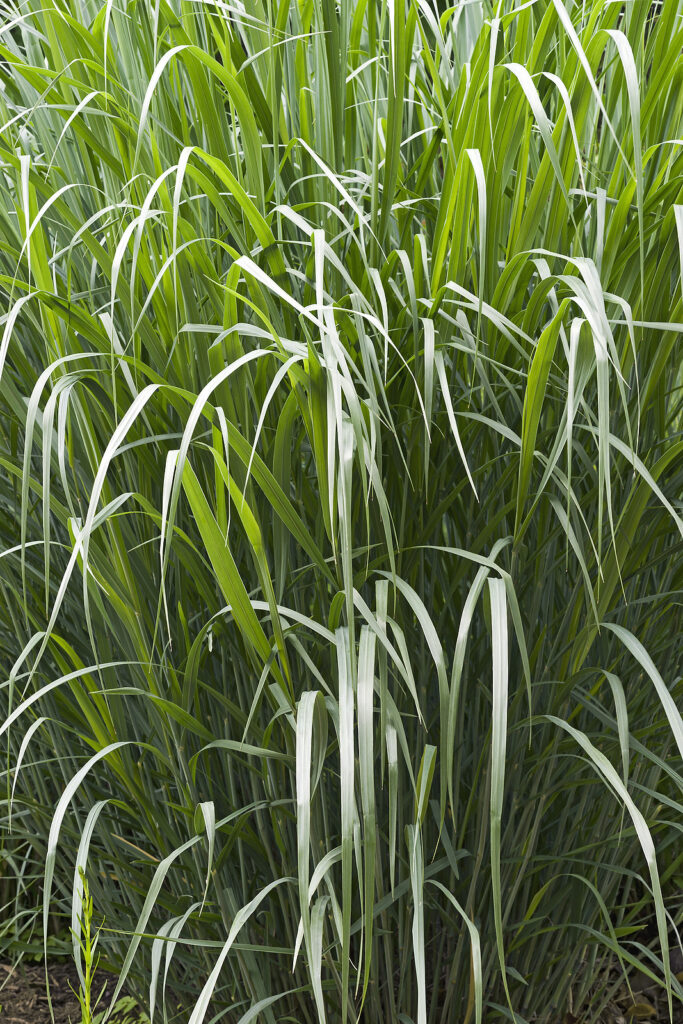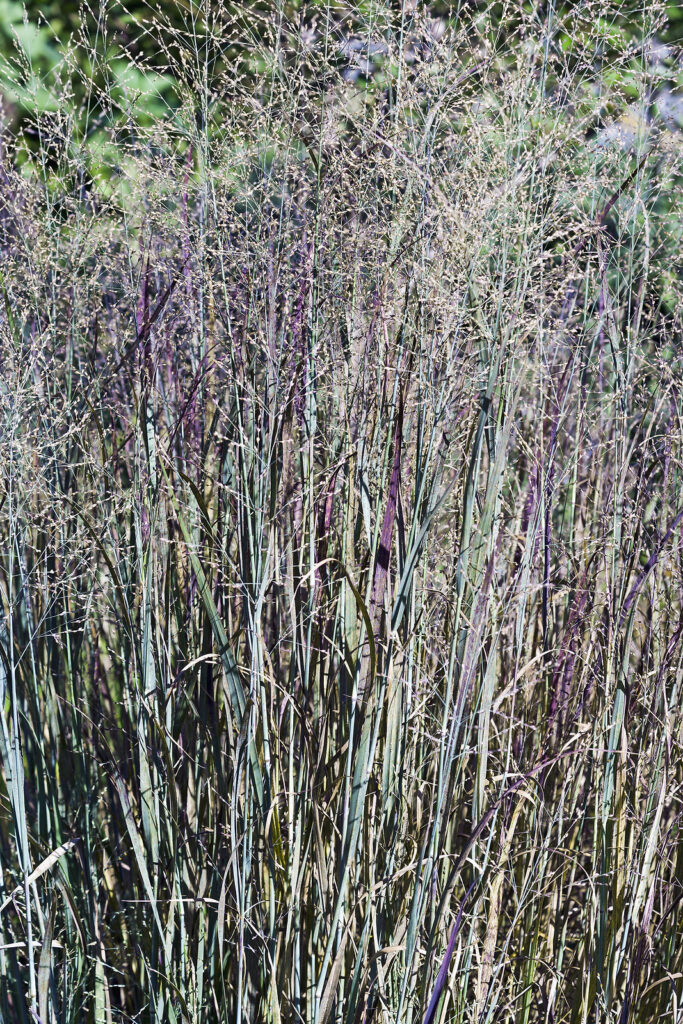Panicum – commonly called Switch grass–is a tall prairie grass that forms upright clumps of narrow, deep green or gray leaves topped by slender flower clusters. Some clumps can grow 4 to 7 feet (1.2-2.1m) tall. Clumps open into loose, airy clouds of pink blossoms in late summer; in autumn flowers fade to white, then brown.
Panicum foliage turns yellow in fall and then gradually fades to beige. Leaves and flowers persist all winter offering interest in cold-weather gardens.
Panicum can tolerate many soils, moisture levels, and exposures, even salt winds.
Use Panicum as an accent in large informal mixed borders or as a seasonal screening. Panicum’s light, airy flowerheads are suitable for cutting and drying. Some species such as P. miliaceum can be used as fodder crops.
Panicum is a genus of about 460 perennial or annual, deciduous, or evergreen grasses native to wooded areas in Europe and in temperature North America.

Get to know Panicum
- Plant type: Perennial grasses
- Growing zones and range: Zones 5 to 9.
- Hardiness: Hardy to Zone 5
- Height and width: 24 to 36 inches (60-90cm) tall and up to 4 to 7 feet (1-2m) tall in bloom depending on species; usually 24 to 36 inches (61-91cm) wide
- Growth rate: Quick
- Form and habit: Uright and fountain-like
- Foliage: Leaves are thread-like I bud, usually becoming flat and linear-ovate, and may be light to mid-green, gray-green, or purple; foliage turns yellow in fall, gradually fades to beige
- Flowers: Finely branching panicles or racemes of 2-flowered spikelets; light flowerheads, suitable for cutting, and drying; pinkish blossoms fade to white, then brown
- Bloom time: Late summer and autumn
- Uses: Sunny, mixed or herbaceous border, cold-winter gardens, accent in large informal flower border or as screening, excellent fall and winter display
- Common name: Switch grass
- Botanical name: Panicum
- Family name: Poacea
- Origin: In tropical regions worldwide, in Europe, and in temperate North America
Where to plant Panicum
- Plant Panicum in full sun.
- Plant Panicum in moderately fertile, well-drained, soil; plant tolerates many soil levels.
- Panicum tolerate salt wind in winter.
When to plant Panicum
- Sow Panicum seed at 55-64°F (13-18°C) in spring.
- Set container-grown Panicum in the garden in spring or autumn.

Planting and spacing Panicum
- In shaded sites, Panicum may need staking.
- Space Panicum 3 feet (1m) apart.
How to water and feed Panicum
- Give Panicum much to little water.
- Feed Panicum with an all-purpose organic fertilizer in spring.
How to care for Panicum
- Cut Panicum back nearly to the ground in late winter.
Panicum pests and diseases
- Panicum are prone to damping off, black ring, tar spot, rust, smut, leaf spots, anthracnose, and sugarcane mosaic viruses.
- Panicum are usually pest free.

Panicum propagation
- Divide Panicum between midspring and early summer.
- Sow seed in a warming cold frame in containers in spring.
Panicum varieties to grow
- Panicum capillare, Witch grass, lax, loosely tufted annual with clumps of flat, linear to narrowly lance-shaped, mid-green leaves, to 12 inches (30cm) long. In late summer and autumn, produces dense panicles, to 18 inches (45cm) long, of tiny, greenish brown spikelets on hair-fine branchlets. To 24-39 inches (60-100cm) tall and 24 inches (60cm) wide. North America.
- P. millaceum, Millet, erect, clump-forming annual with flat, narrow, lance-shaped, mid-green, sometimes purple-flushed leaves, to 16 inches (40cm) long. Bears rigid, intricately branches panicles, to 12 inches (30cm) long, of slightly pendent, small spikelets, to .25 inch (6mm) long, in late summer. To 36 inches (90cm) tall and 9 inches (23cm) wide. Central, southern, and eastern Europe.
- P. virgatum, Switch grass, narrowly upright, rhizomatous, deciduous, perennial grass forming clumps of purple to glaucous, mid-green stems that bear upright, flat, linear, mid-green leaves, to 24 inches (60cm) long. Leaves turn yellow in autumn and light brown in winter. Produces broad, diffuse, weeping panicles, to 20 inches (50cm) long, of tiny, purple-green spikelets in early autumn. To 3 feet (1m) tall and 30 inches (75cm) wide. US to Central America. Zones 5 to 9.















